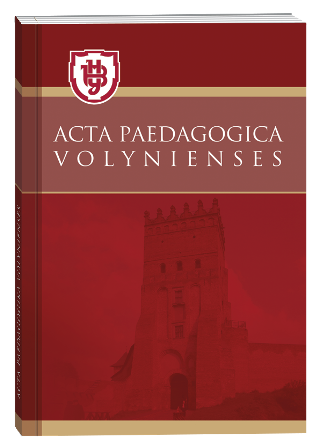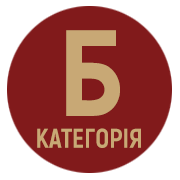CHILDREN’S LITERATURE AS AN IMPORTANT COMPONENT IN EDUCATION FOR TOLERANCE OF PRESCHOOL CHILDREN
DOI:
https://doi.org/10.32782/apv/2023.1.2Keywords:
children’s literature, preschool children, education, tolerance, moral valuesAbstract
The article focuses on the works of Ukrainian children’s literature as an important component for teaching tolerance to preschool children. It is the literary word with which a child gets acquainted with from the birth influences much the formation of a personality, moral and aesthetic principles. A good meaningful book influences the mind and emotions of a person, and the formation of positive personality traits. Through reading, children get acquainted with various aspects of people’s life, moral standards of behavior, peculiarities of human relations, the past of their native land, exciting pages of history, traditions of the people, get a feel for nature, animals and the world around them; learn how to percept the beauty and power of words and get involved in the cultural achievements of other nations. Thus the first sprouts of values are born in a child’s soul: tolerance, mercy, compassion, and the will to do good deeds under the influence of the plot of a good work of fiction. Tolerance is a component of the moral education of preschoolers, so the article focuses on morality, on the value of goodness and beauty, and on the works in which these principles are represented. Value categories begin to form in a child from an early age. Thus, in preschool, children learn moral principles at an elementary level, namely good and evil, and try to judge themselves from this perspective. Staying in the environment of the adults, the child unwittingly learns ethical norms of behavior and the attitude towards them – positive or negative. The article proposes to trace the education for tolerance starting from folklore works, notable lullabies, proverbs, and fairy-tales to author’s literature. In this regard, the author brings to consideration works by Ukrainian children’s writers arranged in the chronological order from the mid-nineteenth century up to the present time. Attention is focused on some methodological aspects of conveying the literary word to a child so that to raise a desire not only to hold a book with literary works (verses, fairy-tales, stories, etc) in the hands, but also to understand what is heard. The necessity of parent involvement into the process of education for tolerance is emphasized.
References
Русова С. Вибрані педагогічні твори. К.: Освіта, 1996. 304 с.
Діленко В.Українська дитяча література як джерело виховання толерантності в дітей дошкільного віку. Педагогічні науки: реалії та перспективи. 2018. Випуск 61. Серія 5. С. 77–80.
Юзвак Ж. Розвивальна сила краси. Початкова школа. 2000. № 5. С. 4–5.
Побірченко Н.С. Василь Сухомлинський: формування дитячої особистості засобами художньої літератури. Педагогіка і психологія. 2004. № 1(42) . С. 5–12.
Ушинський К.Д. Рідне слово. Книжка для тих, хто навчає. Вибр. пед. тв.: В 2 т. Т. 2. К.: Рад. шк., 1983. 359 с.
Богданець-Білоскаленко Н.І. У барвистому віночку. Хрестоматія. Навч.посібник для роботи з дітьми у дошкільн.навч.закладах. К.: Видавничий Дім «Слово», 2012. 728 с.
Гавриш Н. Художня література в освітньому процесі: сучасні технології . Дошкільне виховання. 2011. № 2. С. 4–9.







